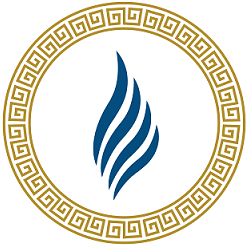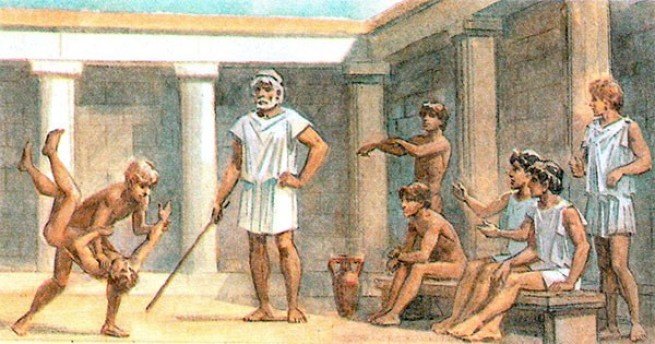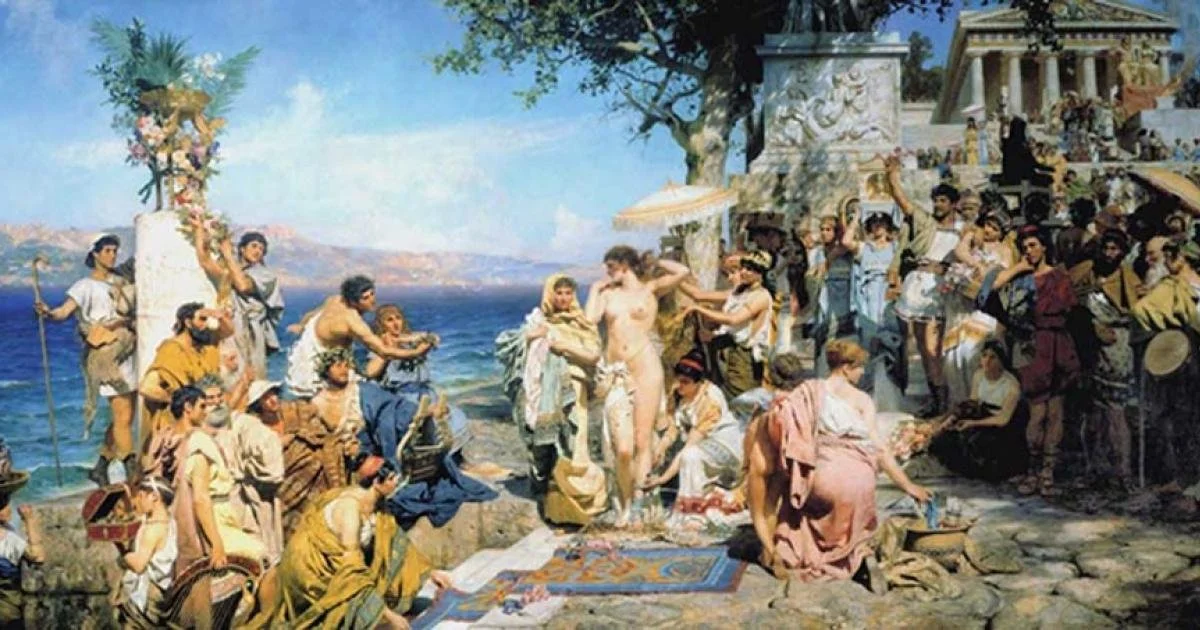The ancient Greek gymnasium was more than just a place for physical exercise; it was a cornerstone of Greek culture, where young men were trained in both body and mind. The gymnasium served as a training ground for future citizens, warriors, and thinkers, combining athletic practices with intellectual pursuits in a manner that emphasized the holistic development of an individual.
This article explores the role of the gymnasium in Ancient Greek society, the philosophical ideals it embodied, and its lasting impact on education and physical culture.
The Origins and Structure of the Gymnasium
The word gymnasium derives from the Greek word gymnos, meaning "naked," as athletes typically trained without clothing. This practice was linked to the Greek appreciation of the human form and the belief that physical fitness was essential for achieving excellence, or arete.
Gymnasia were widespread across the Greek world by the 5th century BCE and were integral to the paideia, the system of education and cultural upbringing in Ancient Greece. Each city-state typically had several gymnasia, where citizens gathered not only to exercise but also to engage in intellectual discussions, philosophical debates, and social activities.
A typical gymnasium was a large, open area surrounded by colonnades, with spaces dedicated to different types of physical training, such as running, wrestling, and discus throwing. Adjacent to the athletic facilities were rooms for bathing, socializing, and study, including a palaestra (a wrestling school) and often a library or spaces for lectures.
The Role of the Gymnasium in Greek Education
In Ancient Greece, the gymnasium was central to the education of young men, particularly in Athens. The education system, known as paideia, sought to cultivate well-rounded individuals capable of contributing to society both physically and intellectually. The gymnasium played a crucial role in this process, serving as the place where physical training and intellectual development intersected.
Young boys, typically from wealthy families, began their education in the gymnasium around the age of 12. Under the guidance of a paidotribes (a physical trainer) and other educators, they would engage in various sports, including running, wrestling, boxing, and the pentathlon. These activities were not only seen as a way to build strength and endurance but also as a means to instill discipline, teamwork, and the competitive spirit.
However, the gymnasium was more than just a training ground for athletes. It was also a place where young men were introduced to the works of great philosophers, poets, and rhetoricians. Intellectuals such as Socrates, Plato, and Aristotle frequented the gymnasia, where they taught and debated with students. This combination of physical and mental training was seen as essential for the development of a well-rounded citizen.
The Socratic method, a form of cooperative argumentative dialogue between individuals, was often employed in the gymnasium. Socrates himself is known to have engaged in philosophical discussions with young men at the gymnasium, challenging them to think critically and question their assumptions. This method of inquiry was not only a tool for intellectual development but also a way to cultivate the virtues of humility, curiosity, and reason.
The Philosophy Behind Physical Training
The Greeks believed that a strong and healthy body was a reflection of a strong and healthy mind. This belief was rooted in the idea that physical excellence was inseparable from moral and intellectual virtue. Plato, in his work "The Republic," emphasized the importance of balancing physical and intellectual education, advocating for the training of both the body and the soul.
For Plato, gymnastics (physical education) and music (cultural education) were the two pillars of education. He argued that excessive physical training without intellectual development could lead to brutality, while too much focus on intellectual pursuits without physical training could lead to weakness. Therefore, the gymnasium was essential for creating balanced individuals capable of rational thought and moral action.
Aristotle, a student of Plato, further developed these ideas in his work "Politics." He argued that physical education was a vital part of the curriculum for young citizens, as it prepared them for the responsibilities of adulthood, including military service and governance. Aristotle believed that physical exercise contributed to the development of courage, self-discipline, and temperance, virtues that were necessary for both personal fulfillment and the well-being of the state.
The connection between physical and moral education in the gymnasium reflects the broader Greek belief in the unity of mind, body, and spirit. This holistic approach to education influenced not only the development of individuals but also the values and ideals of Greek society as a whole.
The Social and Political Significance of the Gymnasium
The gymnasium was not only an educational institution but also a social and political hub. It was a place where citizens gathered to discuss public affairs, share news, and form connections. In many ways, the gymnasium functioned as a microcosm of Greek society, reflecting its values, hierarchies, and social structures.
Participation in the gymnasium was a marker of social status. While all free male citizens were encouraged to engage in physical training, the wealthier classes had greater access to education and could afford to spend more time in the gymnasium. This created a sense of camaraderie among the elite, who bonded over shared experiences and a common cultural heritage.
The gymnasium also played a role in the political life of the city-state. Political discussions and debates were common, and many future leaders were shaped by the interactions and ideas they encountered there. The gymnasium was a place where young men were not only trained to be physically fit but also prepared for their roles as active participants in civic life.
In some city-states, particularly Sparta, the gymnasium was closely linked to military training. Spartan education, or agoge, was centered on preparing boys for a life of discipline, endurance, and martial prowess. The gymnasium in Sparta was more austere and focused primarily on developing the skills needed for warfare. In contrast, the Athenian gymnasium was more balanced, reflecting the city's emphasis on both cultural and intellectual pursuits.
The Influence of the Gymnasium on Modern Education and Sports
The legacy of the Ancient Greek gymnasium can be seen in modern education and sports. The concept of a well-rounded education that includes both physical and intellectual development is still valued today. Schools and universities often emphasize the importance of physical education alongside academic studies, echoing the Greek belief in the harmony of body and mind.
The modern gymnasium, or gym, continues the tradition of physical training, although it has evolved into a space primarily focused on fitness and bodybuilding rather than education. However, the original Greek gymnasium's emphasis on community, social interaction, and the pursuit of excellence is still reflected in the culture of modern sports and fitness centers.
The influence of Greek philosophy on modern educational theories is also profound. The Socratic method remains a cornerstone of contemporary teaching, encouraging students to engage in critical thinking and dialogue. The ideas of Plato and Aristotle about the importance of balancing physical and intellectual education continue to inform educational practices worldwide.
In the realm of sports, the Ancient Greek ideals of competition, discipline, and excellence are still celebrated. The Olympic Games, revived in the modern era, are perhaps the most direct link to the athletic traditions of Ancient Greece. The values that the Greeks associated with sports—fair play, respect for opponents, and the pursuit of personal and collective glory—remain central to the Olympic spirit today.
Conclusion: The Enduring Legacy of the Ancient Greek Gymnasium
The ancient Greek gymnasium was more than just a place for exercise; it was a vital institution that shaped the minds, bodies, and spirits of young men in Ancient Greece. By combining physical training with intellectual and moral education, the gymnasium helped to cultivate the well-rounded individuals who would go on to contribute to Greek society as citizens, warriors, and philosophers.
The philosophy of the gymnasium, with its emphasis on the unity of mind and body, continues to resonate in modern education and sports. As we seek to develop individuals who are both physically fit and intellectually capable, we can draw inspiration from the holistic approach of the ancient Greeks. The gymnasium's legacy is a reminder that true excellence comes from the balanced development of all aspects of our humanity.









